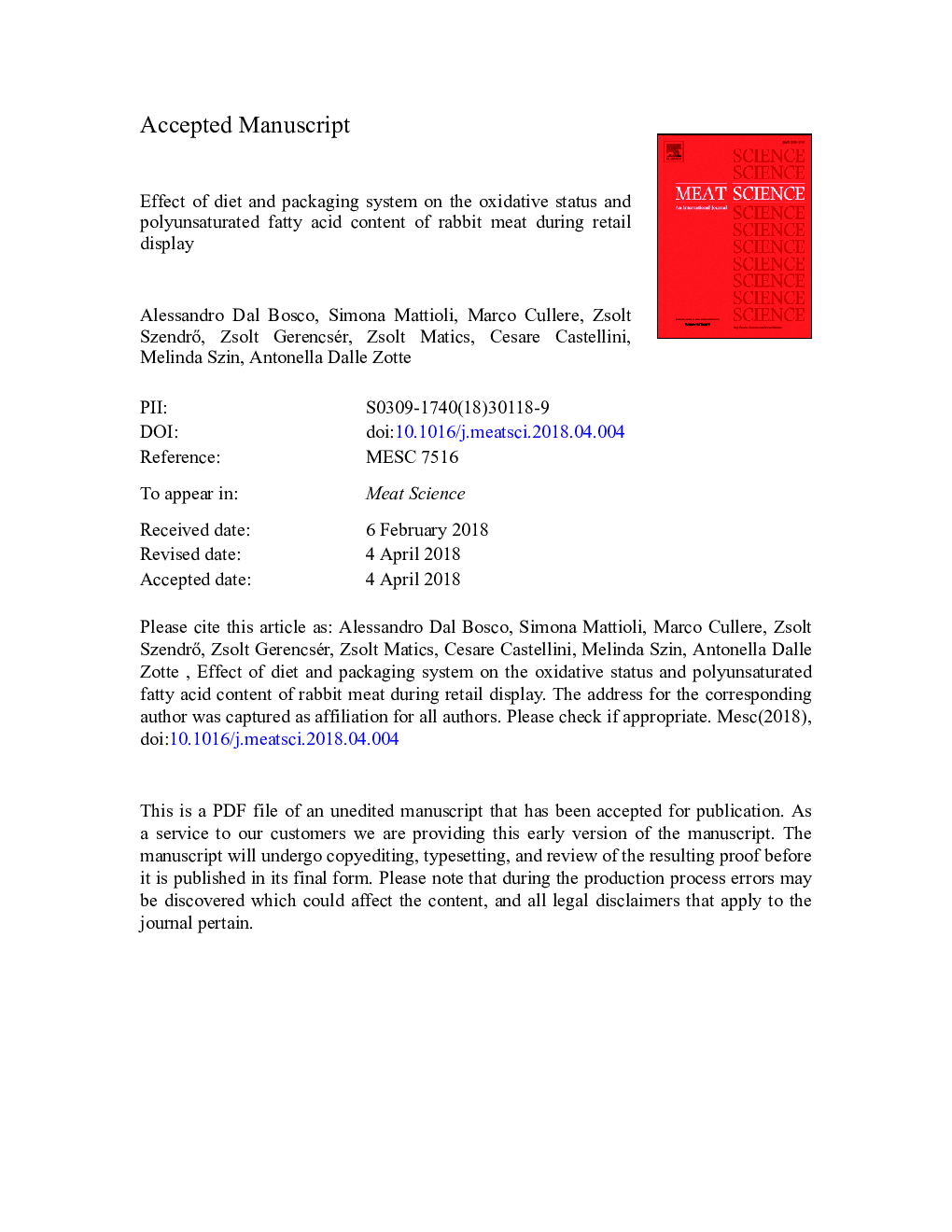| Article ID | Journal | Published Year | Pages | File Type |
|---|---|---|---|---|
| 8502595 | Meat Science | 2018 | 22 Pages |
Abstract
The aim of this study was to evaluate the combined effect of two dietary lipid sources (sunflower vs. linseed oil) and three packaging methods (PVC film - BAG vs. modified atmosphere CO2 20%â¯+â¯80% O2 - MAP vs. and vacuum - VAC) on the oxidative status and polyunsaturated fatty acid content of rabbit loins (Longissimus thoracis et lumborum muscle), at days 1, 4 and 10 of simulated retail display. The diet, storage time and packaging method affected the oxidative status of rabbit meat under retail display. As expected, storage time, independently on the other factors, significantly reduced the antioxidant content of loin meat. Accordingly, TBARs values significantly increased during storage, as well as the dietary supplementation of linseed. The fatty acid profile of the fresh loin closely respected that of the diets. At day 10, oxidative status and fatty acid profile of MAP samples could be yet considered optimal.
Related Topics
Life Sciences
Agricultural and Biological Sciences
Food Science
Authors
Alessandro Dal Bosco, Simona Mattioli, Marco Cullere, Zsolt SzendrÅ, Zsolt Gerencsér, Zsolt Matics, Cesare Castellini, Melinda Szin, Antonella Dalle Zotte,
